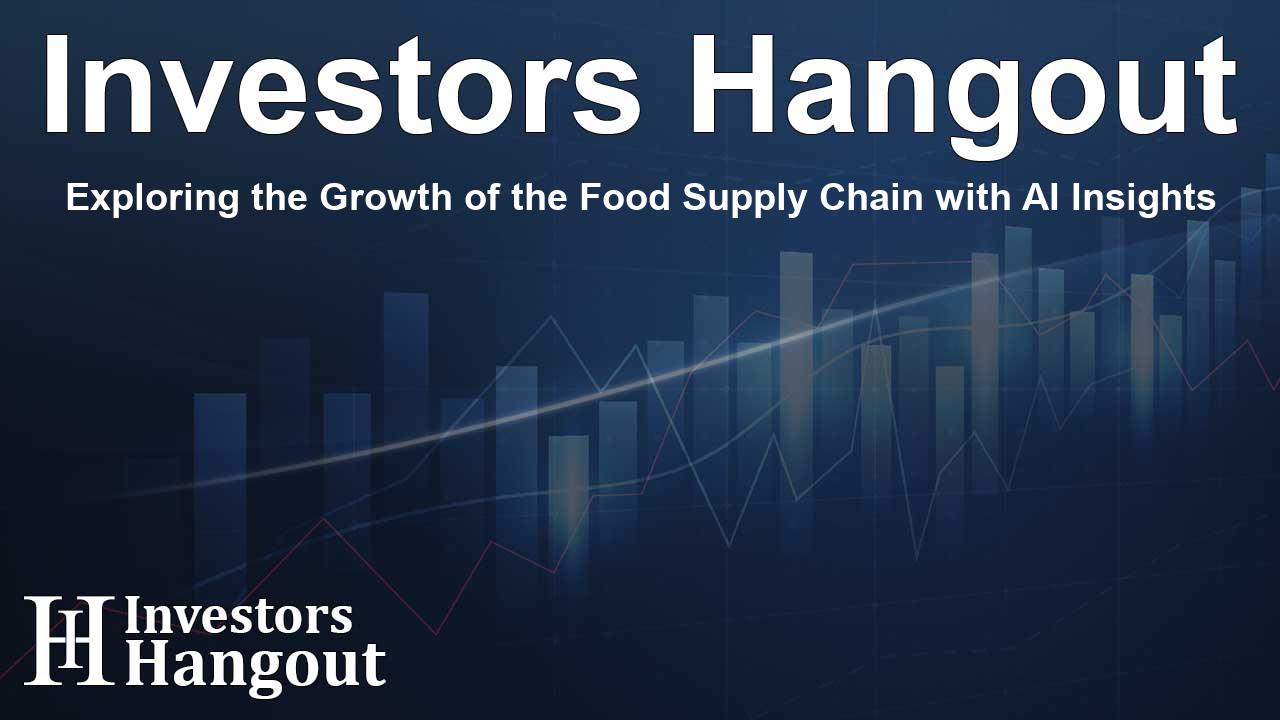Exploring the Growth of the Food Supply Chain with AI Insights

Food Supply Chain Market Growth Fuelled by Technological Advancements
The global food supply chain market is projected to witness significant growth, with an estimated increase of USD 59.51 billion from 2024 to 2028. This growth trajectory corresponds to a compound annual growth rate (CAGR) of approximately 7.86%. The integration of advanced technologies such as artificial intelligence (AI) and blockchain is central to this transformation, signifying a shift towards increased efficiency and transparency throughout the supply chain.
The Role of AI in Food Supply Chain Transformation
Artificial Intelligence is revolutionizing the food supply chain by enabling smarter decision-making and optimizing logistics. AI-powered analytics provide insights that help companies adapt to changing consumer preferences, streamline operations, and improve food safety standards. As more consumers demand fresher and healthier options, the food supply chain must evolve through the adoption of innovative technologies that ensure quality and safety.
Temperature-Controlled Logistics
Temperature-controlled logistics are vital for the successful distribution of fresh and perishable foods. E-commerce is reshaping how food is traded, requiring reliable cold chain management to maintain food safety. Companies are leveraging technologies including robotics and IoT for monitoring temperature throughout transportation and storage processes, ensuring that food products reach consumers in optimal condition.
Blockchain: Enhancing Traceability and Transparency
Blockchain technology is transforming food supply chains by offering unprecedented transparency and traceability from farm to table. This innovation helps to build consumer trust, as customers increasingly seek assurance about the safety and origins of their food. By employing blockchain, businesses can accurately track food products, reduce fraud, and enhance safety protocols.
Market Trends Driving Growth
Several trends are contributing to the growth of the food supply chain market. The rise of e-commerce platforms has incentivized companies to refine their logistics operations, encouraging partnerships and collaborations that enhance supply chain resilience. Mergers and acquisitions among key players in the market are also on the rise as companies seek to integrate advanced technologies and streamline operations.
Collaboration and Innovation
Alliances among companies are increasingly becoming a strategy for improving logistics and operational efficiency. These collaborations enable firms to share resources, implement innovative solutions, and enhance the overall effectiveness of the supply chain. The recent acquisition of Frigoscandia AB by Dachser SE exemplifies how strategic partnerships can expand operational capacity and geographic reach.
Challenges in the Food Supply Chain
Despite the positive outlook, the food supply chain market faces notable challenges. Data security remains a central concern as the increase in digital platforms exposes sensitive information to cybersecurity threats. As food supply chains become more interconnected, a breach in one area can jeopardize the entire network, highlighting the need for robust cybersecurity measures.
Regulatory Requirements and Compliance
Additionally, stringent regulations governing food safety and traceability require continuous adaptation by supply chain participants. As consumer expectations evolve, so must the standards for handling, storage, and distribution of food products. Businesses must remain compliant with these regulations while also investing in the technologies that facilitate compliance.
Market Segmentation Overview
The food supply chain market can be segmented based on product types, end-users, and geography. Among the product types, packaged food and fresh food categories are prominent, catering to diverse consumer needs. As convenience continues to drive purchasing decisions, the packaged food segment exhibits strong growth potential.
Exploring Geography and End-users
The geography of the food supply chain market encompasses regions such as APAC, North America, Europe, South America, and the Middle East and Africa. The various end-user segments—households, commercial entities, and industrial consumers—present unique opportunities and challenges for suppliers aiming to capture market share.
About Technavio
Technavio is at the forefront of global technology research and advisory, providing insights focused on dynamic market trends. With a portfolio that includes over 17,000 reports across various sectors, Technavio is committed to empowering businesses through actionable data and analysis.
Frequently Asked Questions
What is driving the growth of the food supply chain market?
The integration of AI and blockchain technologies, coupled with rising consumer demand for fresher options, is driving robust growth in the food supply chain market.
How does AI improve food safety in supply chains?
AI enhances food safety by optimizing logistics, predicting consumer demand, and monitoring food products throughout the supply chain.
What are the major challenges faced by the food supply chain industry?
Challenges include data security concerns, strict regulatory compliance, and the need for effective temperature-controlled logistics.
How are companies addressing cybersecurity risks?
Businesses are prioritizing cybersecurity measures and deploying advanced technology to protect sensitive information and enhance supply chain resilience.
What types of products drive the packaged food market segment?
The packaged food segment is driven by processed foods, snacks, beverages, and ready-to-eat meals, all fueled by changing consumer lifestyles.
About The Author
Contact Logan Wright privately here. Or send an email with ATTN: Logan Wright as the subject to contact@investorshangout.com.
About Investors Hangout
Investors Hangout is a leading online stock forum for financial discussion and learning, offering a wide range of free tools and resources. It draws in traders of all levels, who exchange market knowledge, investigate trading tactics, and keep an eye on industry developments in real time. Featuring financial articles, stock message boards, quotes, charts, company profiles, and live news updates. Through cooperative learning and a wealth of informational resources, it helps users from novices creating their first portfolios to experts honing their techniques. Join Investors Hangout today: https://investorshangout.com/
The content of this article is based on factual, publicly available information and does not represent legal, financial, or investment advice. Investors Hangout does not offer financial advice, and the author is not a licensed financial advisor. Consult a qualified advisor before making any financial or investment decisions based on this article. This article should not be considered advice to purchase, sell, or hold any securities or other investments. If any of the material provided here is inaccurate, please contact us for corrections.
